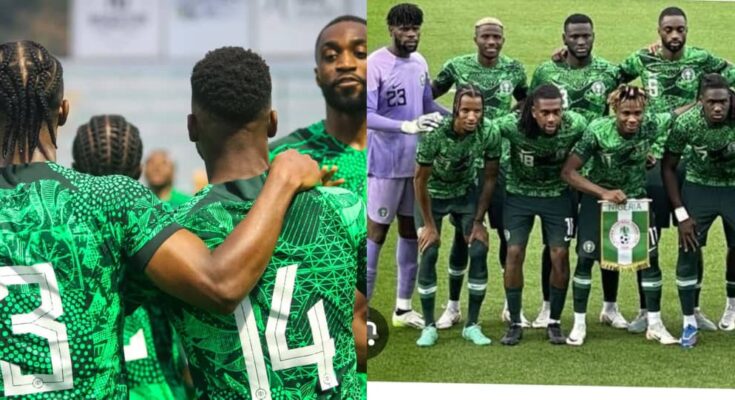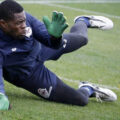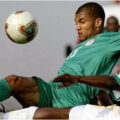Super Eagles started their World Cup qualification journey against Lesotho, yet the anticipated triumph turned elusive as they settled for a frustrating 1-1 draw at the Godwin Apkabio Stadium in Uyo.
In this match, the spotlight shifted to the decisions and strategies of head coach Jose Peseiro, whose errors played a pivotal role in denying Nigeria the coveted three points.
In the Super Eagles’ World Cup qualifying opener against Lesotho, several critical mistakes by head coach Jose Peseiro contributed to their disappointing 1-1 draw.
Let’s delve into the five key errors that marred Nigeria’s quest for three points:
READ ALSO: Nnadozie: Does Nigerian football star deserve to win CAF Best Goalkeeper of the Year?
Flawed Tactical Formation (4-4-2)
Peseiro’s choice of a 4-4-2 formation against Lesotho raised eyebrows as it failed to generate clear-cut chances. The formation lacked a player capable of orchestrating attacks and creating space alongside the striker.
Despite Iheanacho being the suitable candidate for this role, Peseiro played him on the wing, resulting in a lack of fluidity and penetration against Lesotho’s defence.
Absence of a Plan B
A critical flaw in Peseiro’s strategy was the absence of a contingency plan. Despite evident tactical shortcomings early in the game, the Super Eagles coach failed to make any meaningful changes.
The substitutions made were like-for-like, offering no fresh approach to break down Lesotho’s resilient defense. Peseiro’s inability to adapt and implement a Plan B showcased a lack of strategic flexibility.
Misplacement of Kelechi Iheanacho
Peseiro’s decision to deploy Kelechi Iheanacho as a winger proved detrimental. Iheanacho, renowned for his directness and adept moves inside the box, is most effective as a central or supporting striker in a 4-4-2 formation. Unfortunately, playing him on the right flank limited his ability to exploit the opponent’s box, depriving the team of his goal-scoring prowess.
Failure to recognize the need for change
As the game unfolded, it became apparent that the initial tactical approach was ineffective. However, Peseiro lacked proactive decision-making by sticking to the same flawed tactics.
The failure to recognize the need for a change in formation or strategy reflected a lack of adaptability on the part of the head coach.
Lack of In-Game analysis
Peseiro’s shortcomings extended to his in-game analysis or lack thereof. A more astute coach would have identified the team’s struggles and made on-the-fly adjustments.
Peseiro’s failure to visually analyze and adapt during the game contributed to the underwhelming result. A slight tweak in formation, such as reverting to a 4-3-3 or 4-1-2-3, could have provided the attacking penetration needed in the final third.
In conclusion, these five mistakes by Jose Peseiro significantly hindered the Super Eagles’ performance, emphasizing the need for the coach to learn from these errors and exhibit greater tactical acumen in future matches.








